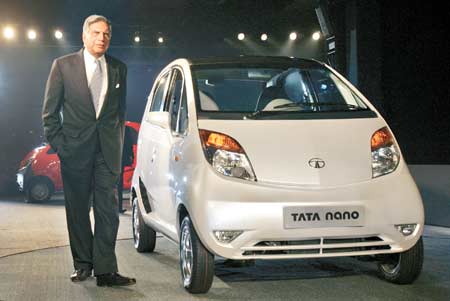Much is written and known about the business success of the Tata Group, the global acquisitions and Ratan Tata’s role in them. Here’s a look at Tata, who steps down as chairman of this $100-billion global empire Friday, not just as a successful business leader but also as an ideal role model who is responsible and authentic, while integrating inner values with outer actions.
Tata is exemplar of a leader who is committed to “triple bottom line” – whose inner values and outer actions demonstrate an evolved, higher level of responsible leadership. Triple bottom line suggests that companies should be preparing three different results.
One is the traditional measure of corporate profit, driven by profits. The second is the bottom line of a company’s people account, a measure in some shape or form of how it contributes and deals with people inside and outside. The third is the bottom line of the company’s planet account, of how environmentally- and socially-responsible it has been.
Most leadership theories focus on three outer aspects of leaders: Who have a powerful Vision, align every stakeholder around that vision and execution of that with excellence. While Tata did all the three things, what makes him different and superior is his inner qualities — the being part of leadership.

There are three characteristics that I have noticed among leaders that make them conscious, responsible and effective leaders — Tata demonstrates all the three.
ONE: Leader has a bigger, higher purpose for you and your organization that expresses responsiveness to community. While some organizations do create the higher purpose, they do not operationalise that. In the absence of translating the higher purpose into actions, these statements become static and meaningless, limited to websites and decorating boardrooms. Individuals and organizations that have imbibed their higher purpose experience more meaning in their life and fulfillment. An organisation that has a well-articulated and an operationalised higher purpose would create sustainable business success, employee loyalty, satisfaction and a sense of pride. Tata group is an ideal example of all that.
TWO: Leader uses creative rather than reactive tendencies to get results. Some people achieve it using reactive competencies and tendencies like controlling, manipulating, pleasing and complying. While some others achieve similar or better results using creative tendencies like relating, self awareness, purposeful actions, and authenticity. If an organisation is only interested in driving financial results, they might be doing this by using reactive competencies. Results can be achieved using multiple motivational drivers. Someone who is extremely insecure and controlling will use those tendencies to drive results. Tata used more creative competencies to lead the organization.
THREE: Leaders operate from higher order values. Robert Kegan, a professor at Harvard Graduate School, proposed the need for leaders to scale their abilities to the higher orders so that they can solve complex problems and create personal transformation. Richard Barret, author and expert on values, talks about seven levels of consciousness. While survival, selfish wealth creation, power, greed, status and being liked can be considered as lower order values, self actualisation, service, trust, honesty and Integrity can be considered as higher end-values.
Because of the above three qualities, it is evident India needs more Ratan Tatas and Indian organizations that follow his and his group’s footsteps for social responsibility and conscious capitalism. We need a movement involving the senior corporate leaders of this country to align businesses with long-term sustainable practices and social contribution. There is none other than Tata who could drive this. His retirement from active business role should lead to his spending more time on helping organizations articulate and operationalise a higher purpose.
By Santhosh Babu
The opinions, beliefs and viewpoints expressed by authors, news service providers on this page do not necessarily reflect the opinions, beliefs and viewpoints of Hill Post. Any views or opinions are not intended to malign any religion, ethnic group, club, organization, company, or individual.
Hill Post makes no representations as to the accuracy or completeness of any information on this site page.



